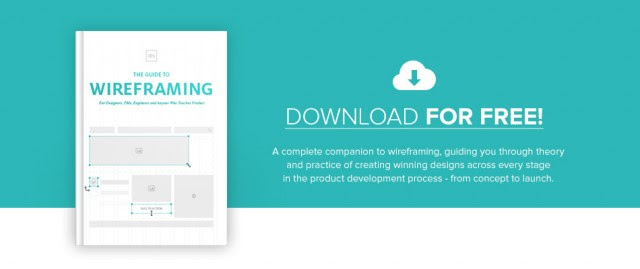1. A Lack of Consistency
There is a time for showcasing creativity, and there is a time for
keeping it simple. When it comes to designing different pages for the
same site, it is best to
keep it simple.
Visitors expect to see the same colors, logos, fonts, navigation
tabs, et cetera in the same place on every page. Don’t make visitors
wonder what site they are on by confusing them with inconsistent page
design. This is frustrating for the user and looks unprofessional for
the company.
This very site is a great example of
consistency.
The color scheme, shapes and fonts flow seamlessly from one page to
another. Plus, Jacob uses a self-portrait to infuse even more
continuity.
2. No Way to Search the Site
Google is so popular because it helps people find the information
they want quickly and easily. Designers should follow Google’s lead and
make sure information on the site they are designing is easy to find.
One good way to do this is to include a search box on the site.
Google Custom Search,
as used on Just Creative, is easy to include and greatly enhances the
user’s experience as they sort through content. There are free and paid
versions available a
3. Experimental Navigation
When it comes to helping visitors navigate a site, a straightforward
approach is best. The aforementioned search box helps with navigation,
as does having clear and logical navigation tabs.
Using
breadcrumb navigation (so visitors can see where they are and how they got there) can be helpful for certain types of websites.
Here is an example of breadcrumb navigation. As you search through Amazon, you can
easily see where you are and how you got there.
This page would list the non-fiction eBooks about cats. A hyperlink on
the company’s logo that takes the user back to the homepage can also
serve as an “emergency exit” for users to get back to the homepage
without leaving the site.
4. Outdated Content
More is not necessarily better when it comes to website content.
Weeding out outdated content should be part of regular website maintenance. Old content can either be updated and made relevant for users or
redirected to more applicable content.
Leaving outdated content as it is turns visitors off to the site and
makes them less likely to return. For example, if the last blog post
went up three years ago, visitors are likely to think that the website
has been abandoned and will not return.
5. Dead Links
Like content, links need to be monitored as part of regular website maintenance.
Dead links are unprofessional and annoy users. Remove them promptly and replace them with working links to keep users happy and engaged. You can use
Google Webmaster Tools to find deadlinks.
6. Unconventional Content Organization
Keep the site organized.
Have the most important information greet visitors when they first arrive. Make other important information easy to find by putting it in a logical, practical place.
Keep in mind the different types of visitors a site is likely to
receive and organize information to meet different needs. For example,
the website for a college should contain tabs to redirect different
visitors (prospective students, current students, alumni, and faculty)
to pages with more specific, relevant information.
Stonehill College has great content organization. They
offer multiple routes to retrieve the same information.
For example, information about admissions is available from a homepage
link. It would also be available via the “resources for prospective
students’ option from the dropdown list.
7. Poor Legibility and Readability
Visitors are on the website to find information. In addition to
making the information easy to find, make sure it is easy to read.
- Use simple, easy-to-read color schemes. While you
are free to use whatever colors you want for the primary design,
remember the wrong color combination can make reading difficult. For the
bulk of your site’s content, try to use black text on a white
background.
- Don’t be too experimental with fonts. San Serif
fonts are best for the site’s content. If you must use Serif fonts,
limit yourself to things like headings and small, insignificant blocks
of text. Also, limit the variance in size and typeface. Three is the
magic number… no more than three different fonts and no more than three
different font sizes.
- Keep paragraphs short (about four sentences each). The more white space, the better.
8. Music
Music on a webpage can be distracting at best, irritating at worst.
Include a music player only if the music is relevant to the site’s
content. For example, the website for a band may benefit by playing
their music for visitors.
If a music player is used,
be sure to have a stop button and keep the loop continuous. Visitors do not want to hear the same song start over each time they go to a new page.
Fans can enjoy
Leeland‘s
music on their website but on their own terms. The tunes won’t assault
you as soon as the page loads. Instead, visitors can launch the music
player or hit play on one of their videos.
9. Neglecting Mobile Users
This tip might seem outdated but we are all aware of the
popularity of mobile devices. However, an alarming number of designers still fail to take these users into consideration.
Web designers must be mindful of this audience. Either design pages that are
easy to use and read on a small screen or create a separate mobile site.
When opting for the latter alternative, be sure that the mobile site
is consistent with the main page and that mobile users have the option
to access the non-mobile version of the website.
10. Forgetting the Contact Page
We’ve saved the best for last; or at the very least, the most
important. This tip goes above and beyond simple usability. The other
mistakes might be annoying, but this could actually affect the company’s
profits.
Providing adequate contact information is essential. It is the first
step towards customer loyalty and the necessary link between disgruntled
customers and a problem-solving customer service representative.
The vast majority of credit card chargebacks occur because of faulty
customer service. As a designer, you probably don’t know much about
these financial setbacks, but your client does (if you want to know
more,
check this article about credit card chargebacks).
Your clients expect you to deliver a top-notch, effective site. And
if your design actually increases the likelihood of a credit card
chargeback, they won’t be happy. Since the
majority of chargebacks are filed simply because the user can’t find the necessary contact information, it is essential you provide everything a user could possibly want. That might include:
- A generic email address (like info@companyX.com)
- Specific email addresses that connect the user with the exact person or department they want
- A contact form
- The physical address
- A fax number
- A telephone number (although direct lines or extensions to applicable departments would be better)
- GPS coordinates
- A map
- Links to the company’s social networking sites
- A live chat interface































